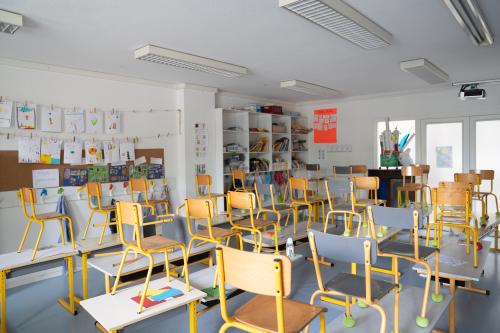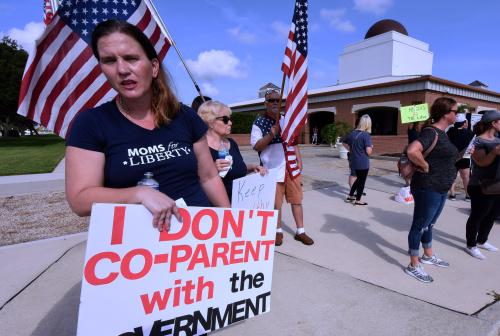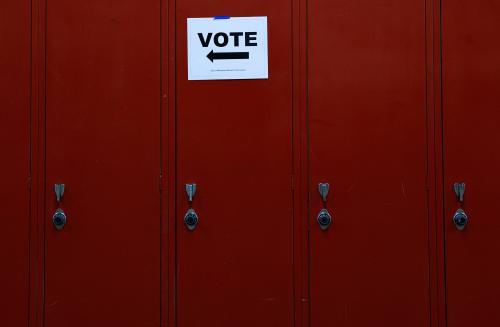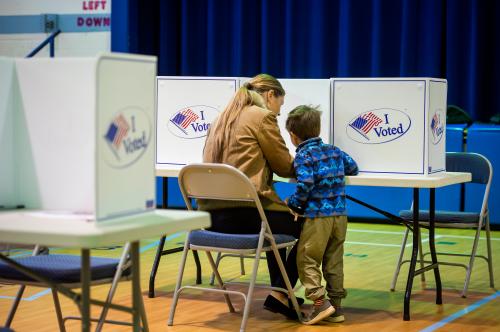The staggering impact of COVID-19 on American lives and the economy was understandably the central issue in the first presidential debate and the vice presidential debate. But somehow, critical questions around education were absent in both debates. In fact, according to transcripts of both debates, the candidates used the word “school” fifteen times, but not always to describe K-12 education. The word “education” itself was stated just three times.
Clearly, this is a school year like no other. A recent Education Week analysis found that 74 percent of the 100 largest school districts in the United States opted exclusively for remote learning, dramatically impacting the education of over 9 million students. At the same time, increasing our nation’s educational achievement is a persistent challenge. The 2018 Programme for International Student Assessment (PISA) revealed that American students performed above average in reading, ranking 13th just behind Sweden and New Zealand, but below average in math. In math, we ranked 37th and fell behind Spain, Lithuania, and Hungary. American students’ average performance in both subjects has remained flat for approximately two decades.
Our nation’s lingering educational woes need to be addressed if we are going to lead the next generation in workforce productivity and entrepreneurship. These challenges are now exacerbated by the COVID-19 pandemic. Teachers, administrators, and families have made a herculean effort to engage students broadly in online learning that is not optimal. Even before the pandemic, cyber charter schools with sufficient infrastructure fell short of meeting high standards for student outcomes. A recent study from Indiana indicated that students in grades three through eight experienced significant, long-term declines in their math and English/language arts skills after shifting from a traditional public school to a cyber charter school when compared to their former public school peers, who were matched in terms of race/ethnicity, sex, socioeconomic status, and academic achievement. These findings build on prior evidence from Ohio, Pennsylvania, and across the United States.
These challenges of under-resourced schools, especially in urban areas, and attempts at online learning are heightened by the continuing digital divide.
The result of the COVID-19 crisis is that students are projected to have fallen behind by a third of a year in reading and up to two-thirds of a year in math by this fall 2020. However, these losses are unlikely to be universal, and the top third of students may make gains in reading.
What impact does this have for our country? McKinsey and Company addressed this question in a recent study that estimates the impact on American business. Assuming that regular, in-person instruction does not resume until January 2021, the average American K-12 student may lose $61,000 to $82,000 in lifetime earnings due to educational disruptions faced during COVID-19. These financial losses will likely be greater for Black and Latinx students. Losses across all K-12 students are estimated at $110 billion in annual earnings with $98.8 billion attributable to COVID-19 learning losses and the remaining $11.2 billion from the associated increased likelihood of students dropping out of high school.
The challenges faced by our current education system and magnified by the COVID-19 crisis put America behind and leave us with little capacity to lead in the future. In 1983, the National Commission on Excellence in Education’s A Nation at Risk cautioned “Our Nation is at risk. Our once unchallenged preeminence in commerce, industry, science, and technological innovation is being overtaken by competitors throughout the world. … Others are matching and surpassing our educational attainments.” This language is dramatic and does not apply to all students and educators, but the data from four decades ago aptly fits today and demands our attention amid the ongoing crises faced by our nation. It is imperative that discussion about education enter the national conversation.









Commentary
The missing piece: Where is ‘education’ in the national conversation?
October 12, 2020